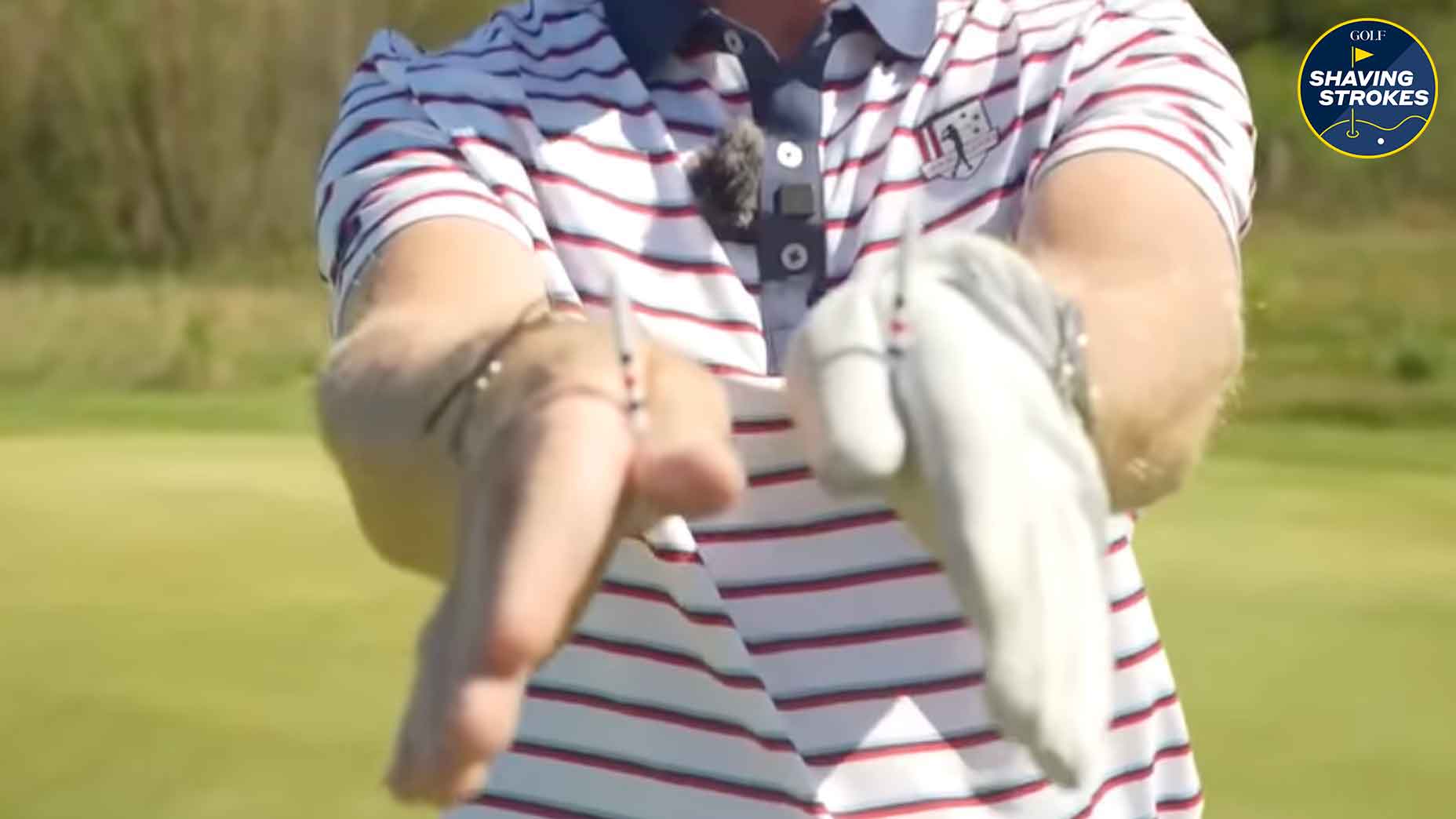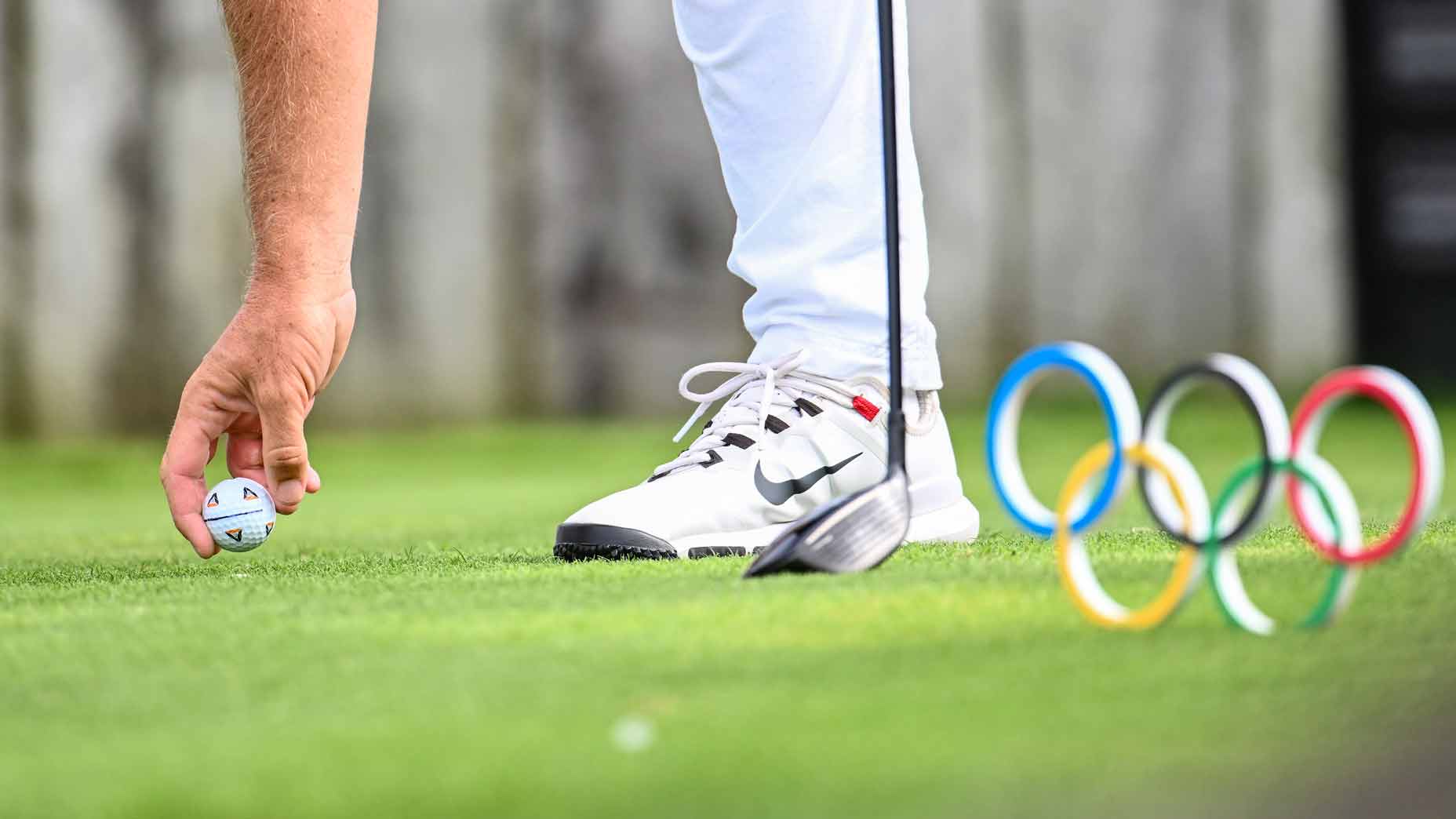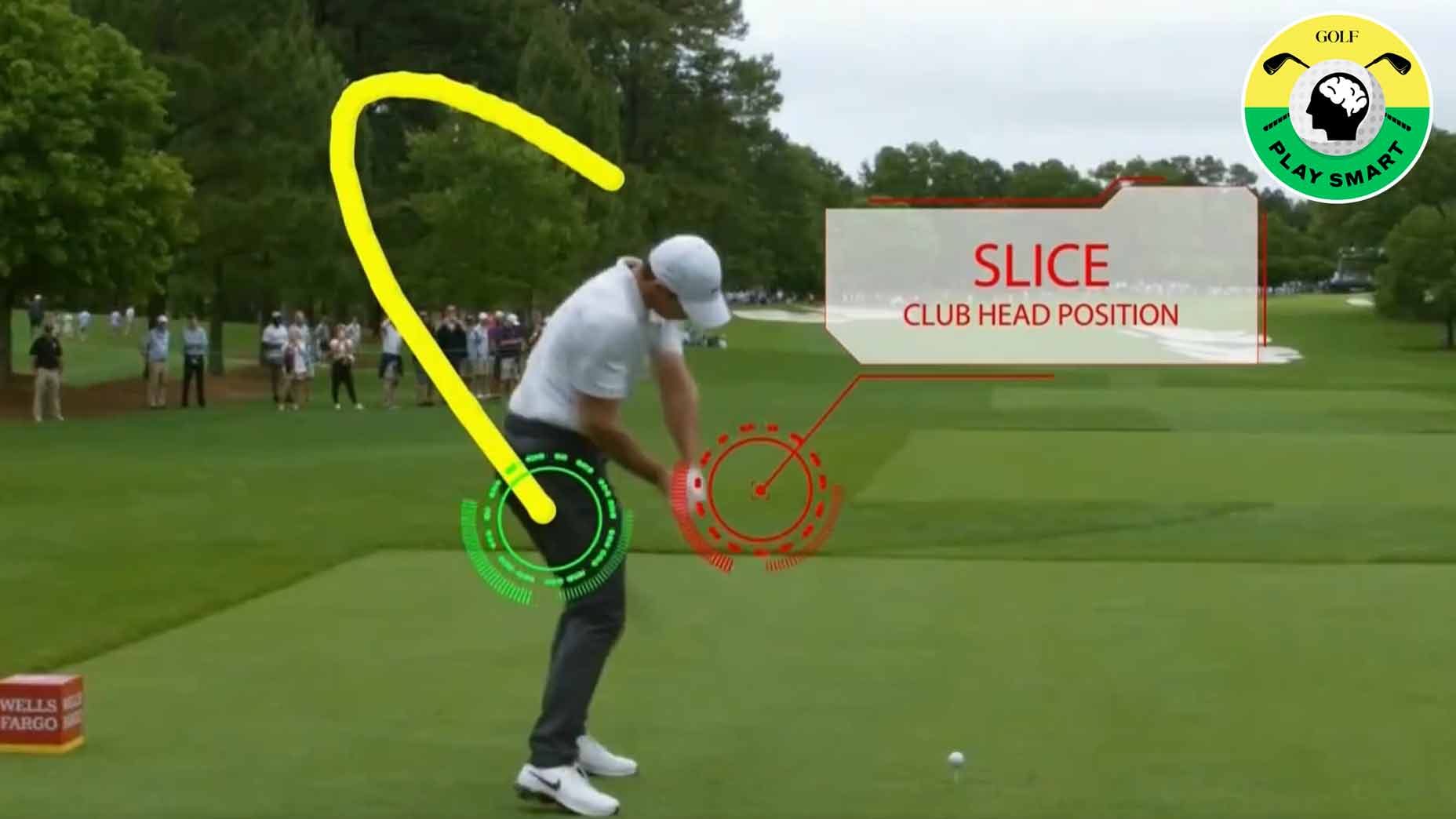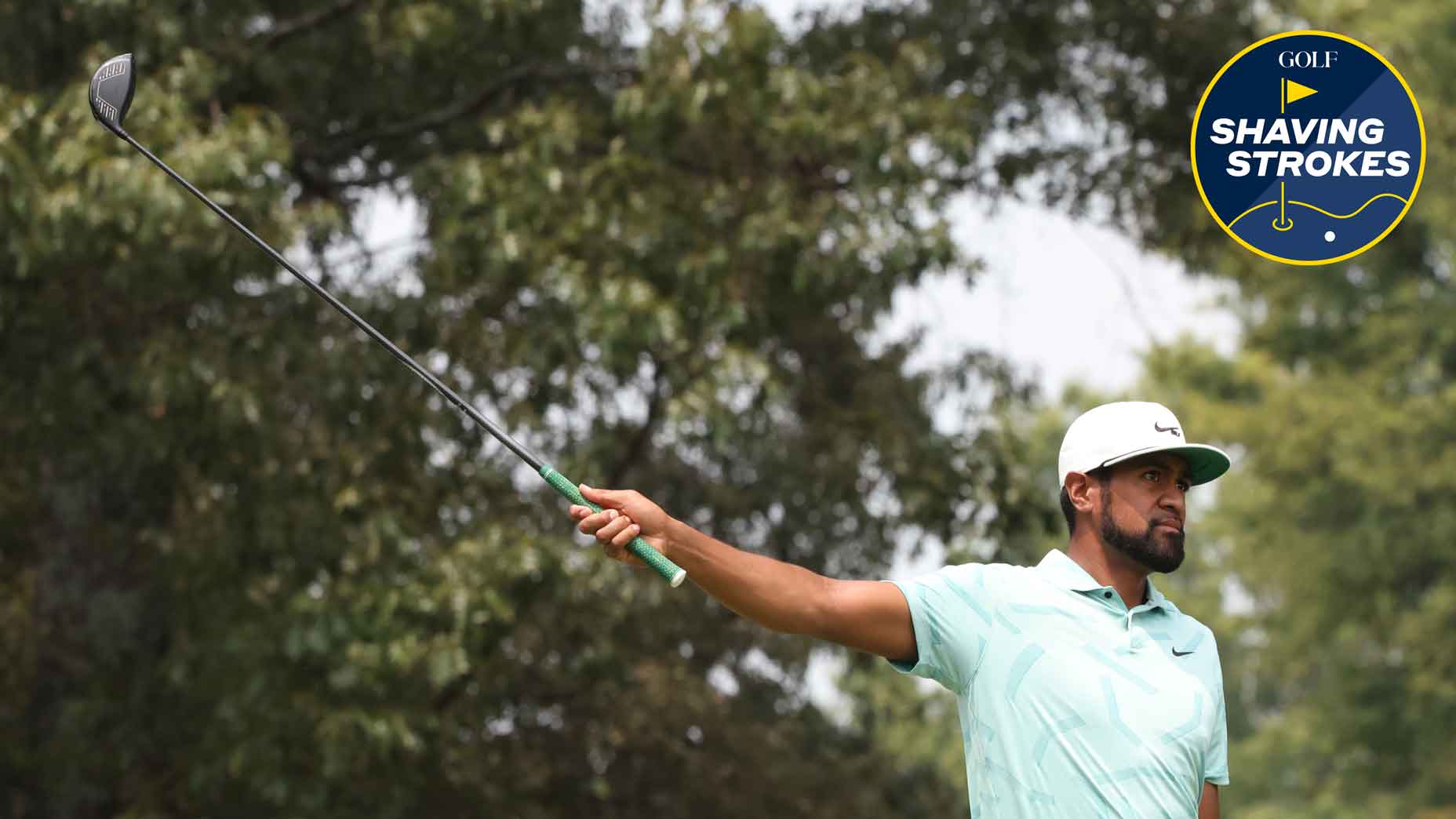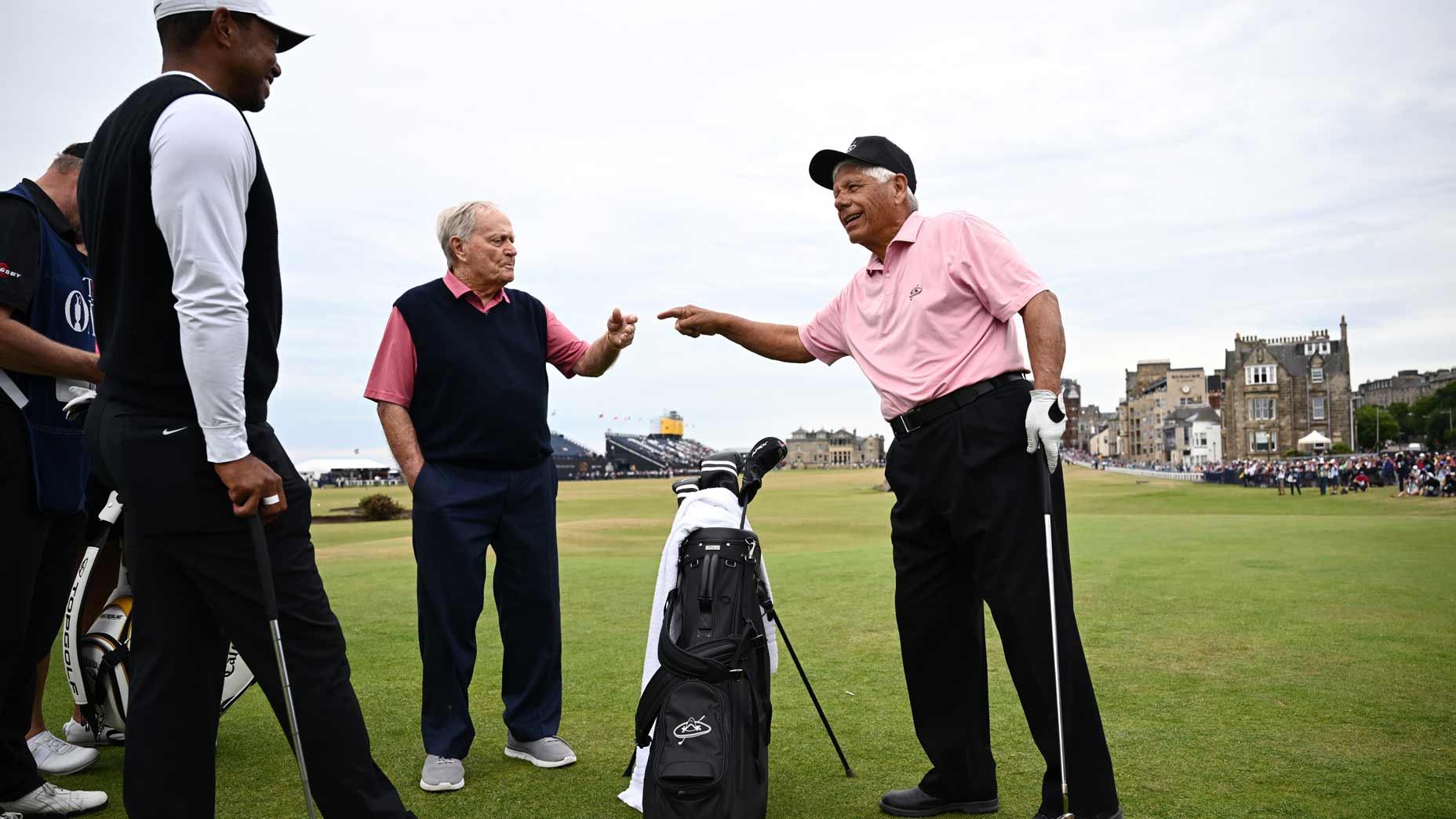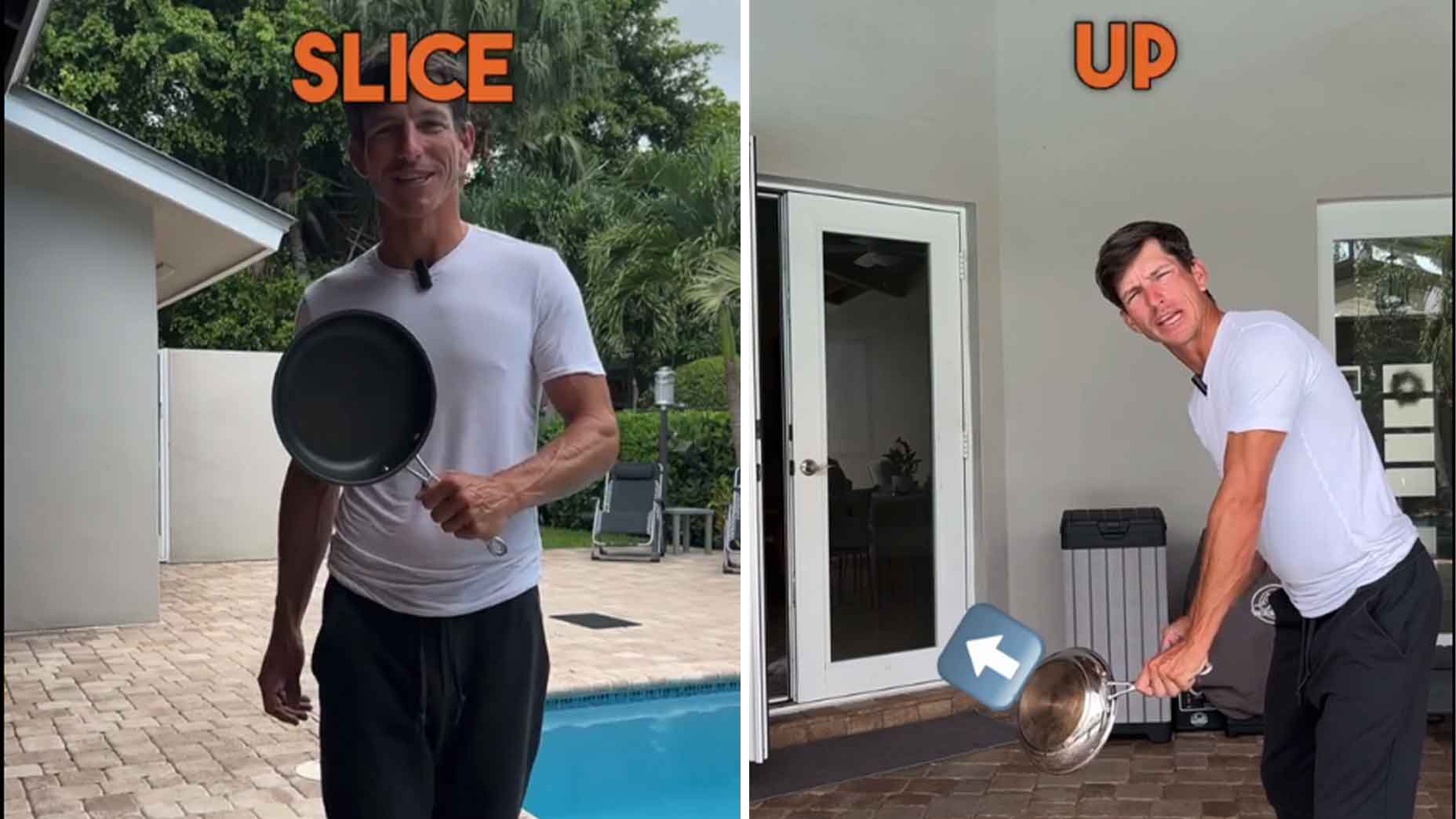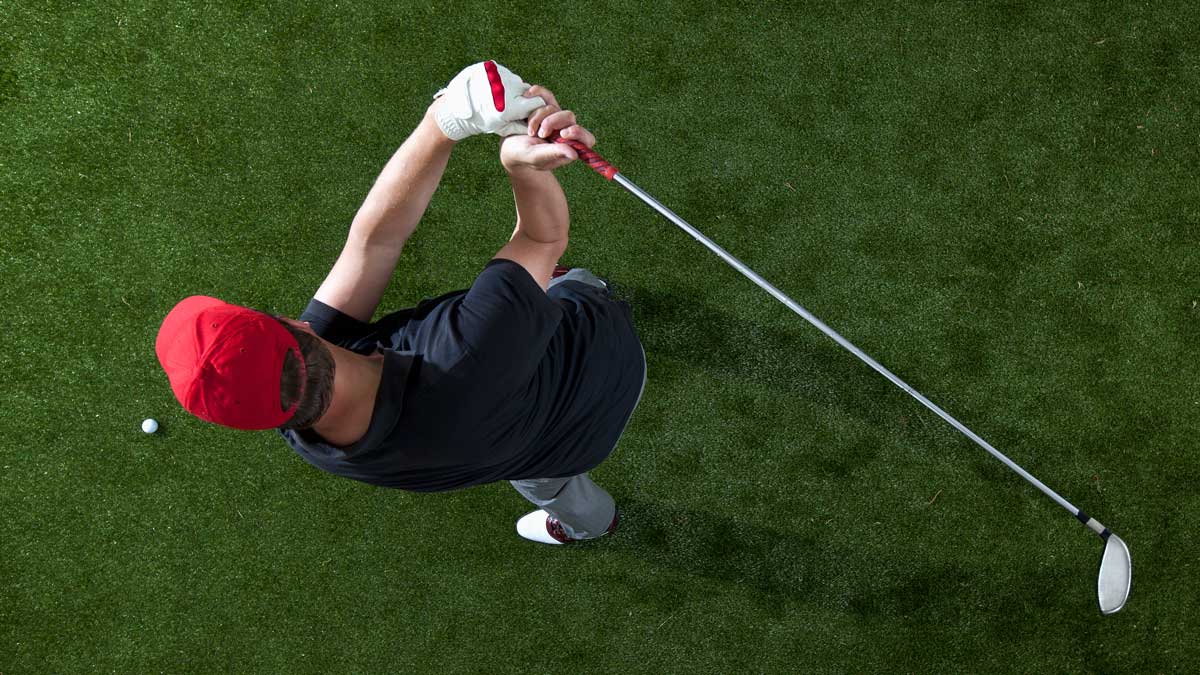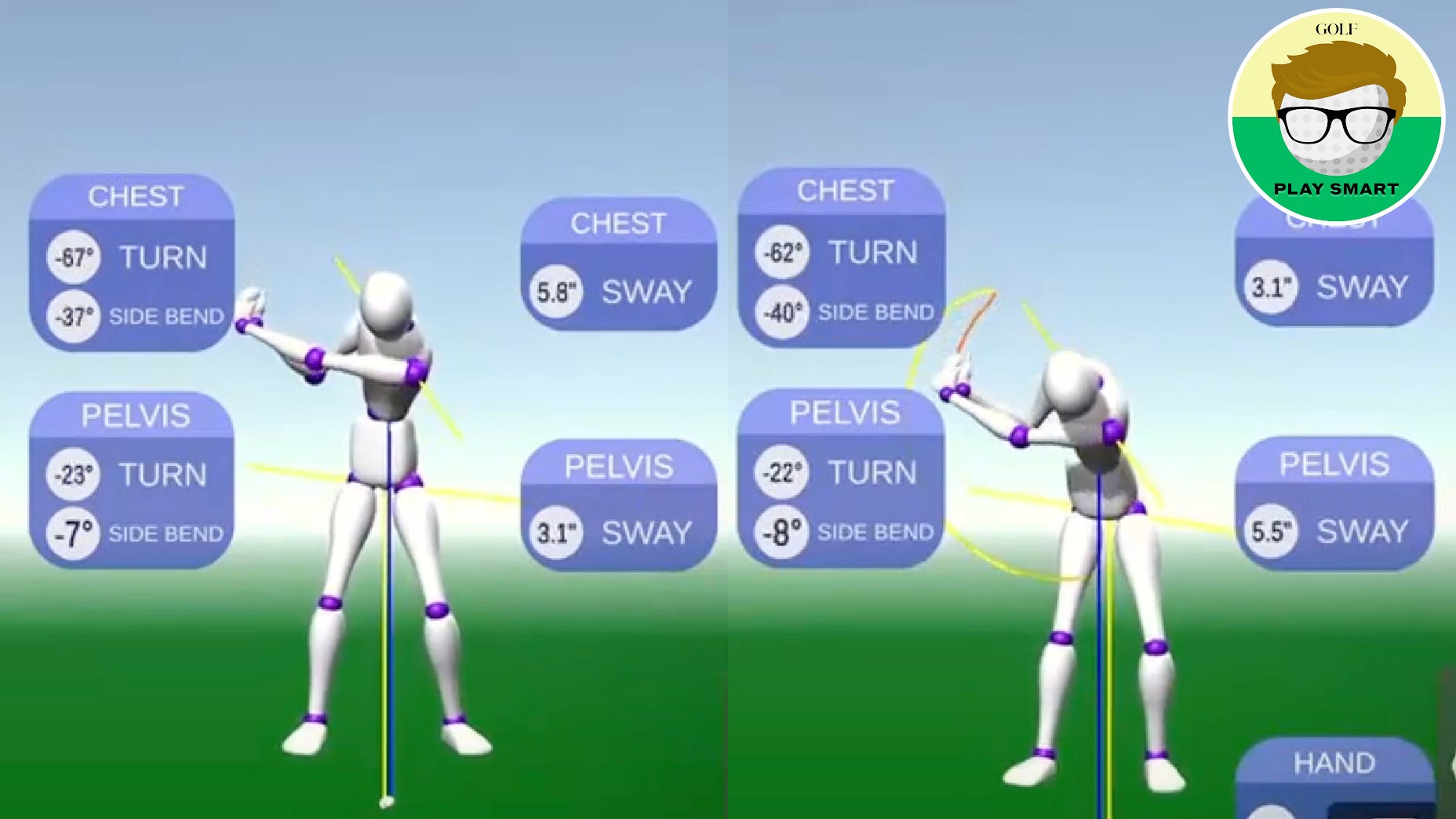The 10 most embarrassing shots in golf (and how to avoid them)
- Share on Facebook
- Share on Twitter
- Share by Email
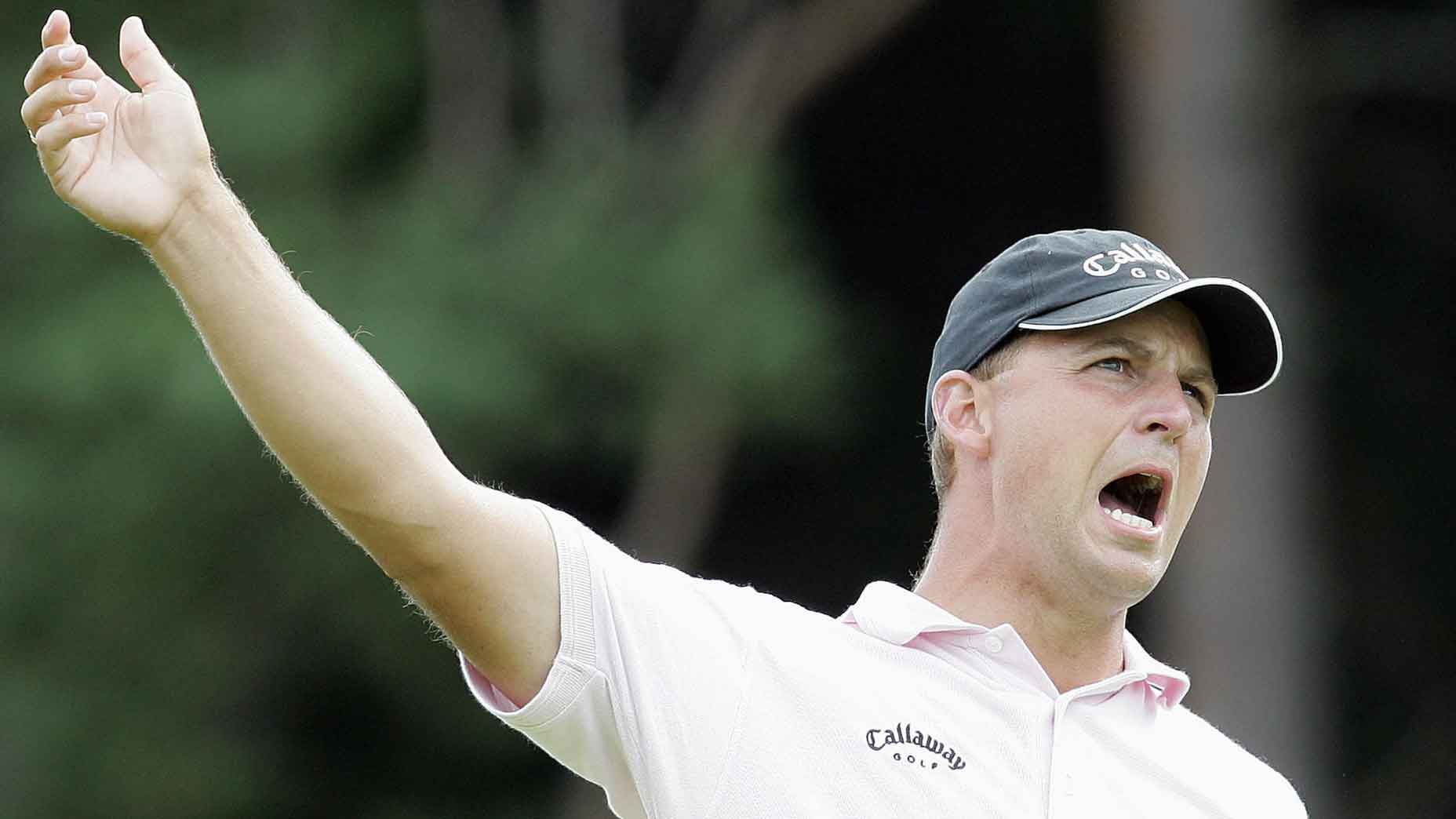
Swedish golfer Niclas Fasth shouts "Fore" as he misses a drive.
Getty Images
Golf certainly can be a very rewarding game at times. Those times when your hard work pays off always seem to make the sun look a little brighter and the grass a little greener. But anyone who has played golf long enough has also had to deal with the embarrassment that golf also entails. Your ability to handle these situations successfully depends on your ability to understand what causes the shot, and not to dwell on it once it’s done. So, let’s talk about the top 10 most embarrassing golf shots and how to avoid them.
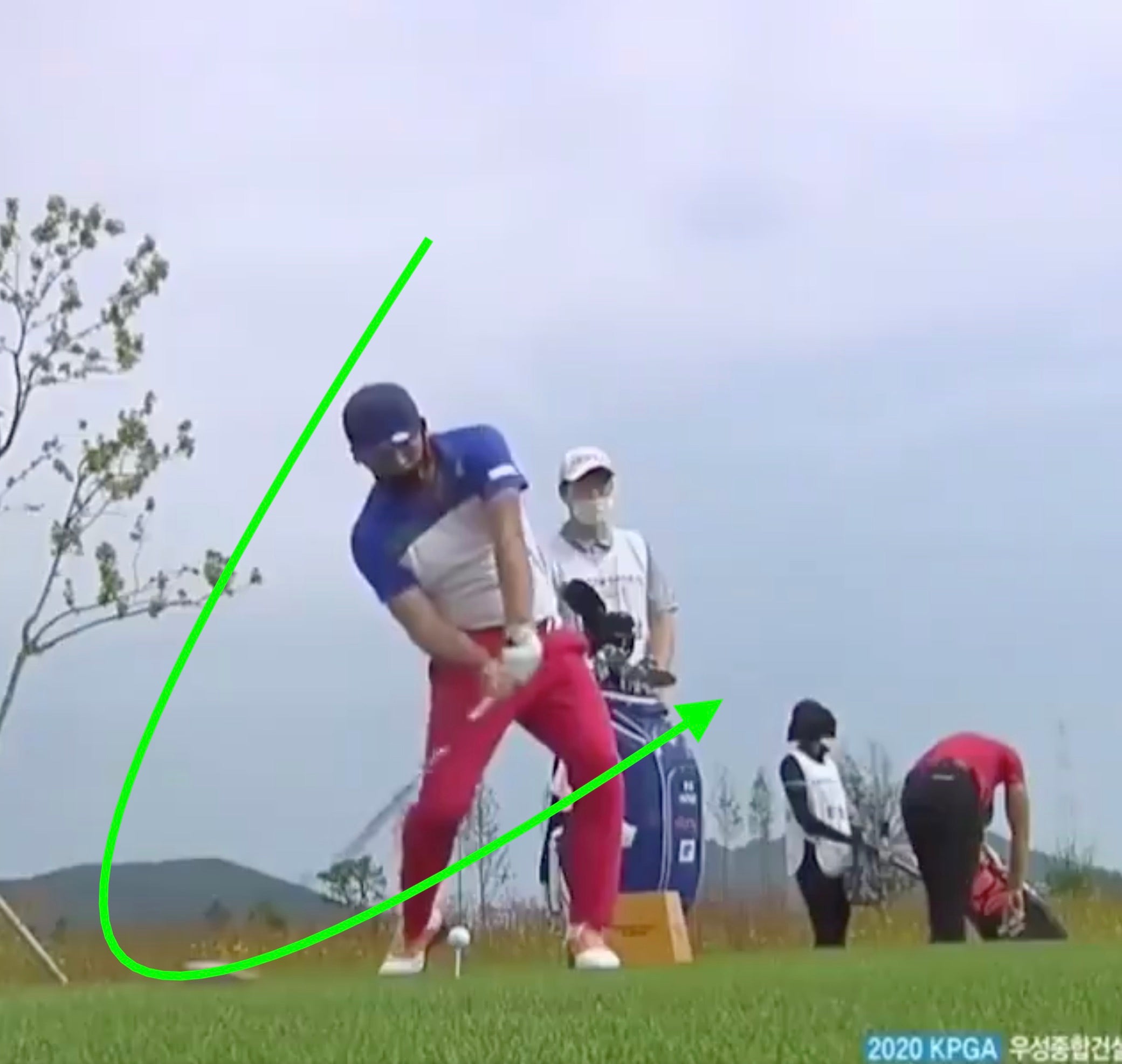
1. The whiff
While there may be three strikes in baseball, that certainly is not the case for golf., which is why the whiff may be golf’s ultimate embarrassment. It may happen more often when you are a beginner golfer, but on occasion in can happy to an experienced golfer — just look at Hosung Choi.
To avoid this happening, a proper and balanced posture is the first step to success. A good, centered setup should help you stay balanced throughout your swing, all the way through to the finish.
Another good habit is to practice holding your finish until your golf ball lands. If you can stay balanced enough to do this, you will probably be able to avoid the whiff.
Finally, it can take some time for a newer golfer to feel comfortable hitting the ground with their clubhead. It can feel violent and sometimes even a bit messy to really take some turf, but this is a necessary skill to launch your golf ball and make solid contact. A good habit is to make sure that your practice swings hit the ground (unless you’re hitting a driver off the tee).
2. The toe shank
This shot can often be more embarrassing than a whiff, especially if you hit one on the range. The ball travels straight sideways and can often enter the hitting area of the golfer hitting balls next to you. The best way to handle this with grace: to say you are sorry and either take a small step forward toward the range to hit your next shots so that it doesn’t happen again, or to move to the far right side of the range if you are right handed to avoid the golf ball entering into someone else’s personal space.
Technically speaking, what can often cause this miss is a setup and a posture where you are standing too far away from the ball and the end of your club at address where it is difficult to get the ball to line up with the center of the face when you swing. A great way to practice this is to place a tee on the inside of your golf ball and avoid hitting the tee so that you are extended more down and out with your arms to avoid the contraction of your arms.
3. The classic shank
Has there ever been a golfer who has never shanked the ball? This miserable shot, off of the heel of the club often leaves the club at a 45 degree angle for an iron and feels terrible as the vibration often goes right up the shaft and into your hands. The problem with a shank is it tends to lead to more shanks, as adding tension is a normal reaction.
While there are many causes for shanks and all of theses misses, the first check should be good posture, bent forward from the hip joint, so that your hands can hang below your shoulders where there is some room between your hands and your thighs.
A good grip check can also be due at this point to make sure that your clubface is relatively square. A weak grip can cause an open face and this leads to a lot less clubface to work with at impact.
Lastly, keeping your underarms relatively close to your body, avoiding your under arms moving out and away from your body during your swing can also help to keep the ball on the club face and off of the heel. To react to this miss, quickly place something outside of your golf ball like an alignment stick or a head cover to determine when the club is getting on the outside of the ball and to give you feedback to avoid this.
Another smart reaction can be to switch to a hybrid or a fairway wood when possible, as the ball hitting off of the heel would still not likely produce a great shot, it does however not produce the low screamer out to the right along the ground.
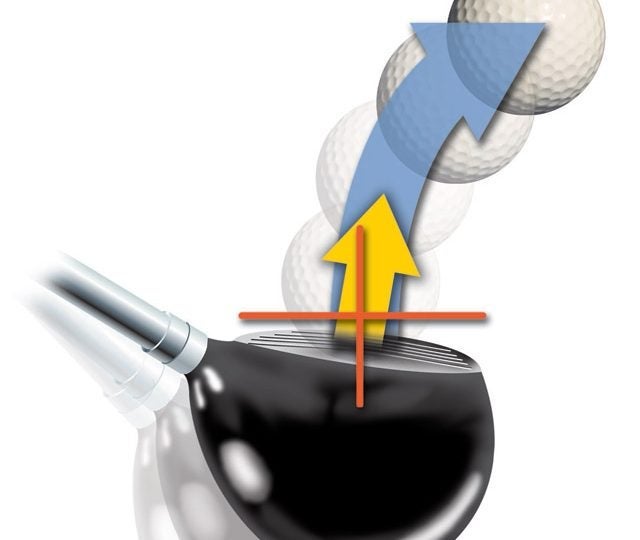
4. The banana slice
A major slice can be embarrassing and an extreme robber of distance that can make some holes just seem endless.
The most common cause of a slice is an open clubface, and this can come from a grip position that makes square contact difficult. If this is your issue, I suggest you go extreme and make a big (likely uncomfortable, but you will get past this when you see the good results) grip change.
If you are right handed, take both of your hands and turn them substantially to your right so that your thumbs are both on the right side of the grip.
I realize this is extreme, but if you are a lifelong slicer, what do you have to lose?
The more your hands are to the right, the more likely your clubface will stay square on your backswing and the easier it is to allow the face to naturally release through your forward swing allowing a face that is better at impact. The beauty of a better clubface is that not only will the impact feel better, but the ball will go farther and if by chance you have developed a swing path that attempts to compensate, the ball will start to go in the same direction as your swing path and the natural reaction at this point would be a correct one.
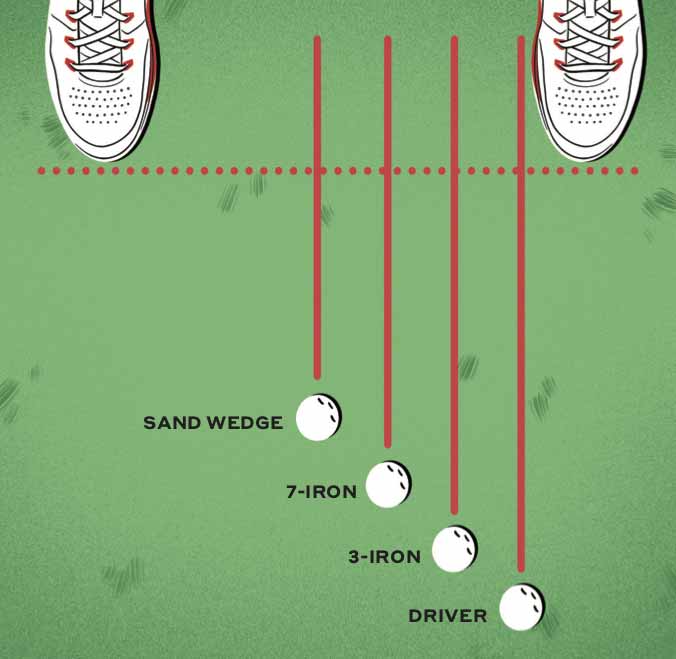
5. The driver pop-up
You’re ready to hit that power driver and then you pop the ball up, taking away all of your distance, and you may hear your playing partner say, “that might bring rain…” And to add insult to injury, now your next shot (or shots) are more demanding because you’ve left yourself a greater distance.
Most often, pop-up drives are caused from an incorrect ball position with your driver, where the ball position is too far back in your stance and not in line with the instep of your forward foot.
It is also important to remember here that not only do you need to position your ball forward in your stance, you need to allow your shoulders to tilt a bit back away from your target so that your angle of the clubhead coming into the ball is more sweeping than steep.
A set up routine that I suggest if this is your miss is to start with your feet together with the ball and the club relatively centered in your body. Take a baby step with your lead foot and a large, widening step with your back foot and allow your back shoulder to drop down as you step this foot. This better ball position, specific to the driver, and proper shoulder tilt should allow you return to the power driver that you like to be.
6. Topping the ball
You visualize a beautiful high shot flying through the air and then you top the ball, causing it to just roll forward a short distance. It happens and it really isn’t pretty, but often it is survivable. I suggest you underreact to this emotionally as much as possible and move on as quietly as possible to avoid knocking your confidence.
A great drill if you tend to top the ball is to place a tee on the ground on the target side of the ball and attempt to sweep the tee off of the ground by allowing your clubhead to stay low to the ground after the ball. The feedback that you receive will help you to learn the proper motion it takes to get the ball into the air and minimize your tops.
7. The chunked chip
When you chunk your chip, not only does it feel terrible, but the ball usually doesn’t move very far, which means you have to hit almost exactly the same shot once again.
The most common cause of this miss that I see is a setup that is too crowded and often looks ‘“squatty”. Good posture, plus gripping low on the grip of the club, will both give your arms more room.
Be mindful that you do not want to have a lot of shaft lean forward as this can make the leading edge particular sharp and digging, causing the club to get stuck into the ground when you attempt to brush the grass. If this is your habit, practice hitting some chips with your feet together and the clubhead and handle centered in your body. You can put a bit of weight and lean into your forward foot, but avoid extreme leaning of the shaft that can come when your ball position is too far back in your stance

8. Missing a short putt
One of the most embarrassing parts of missing a short putt is that most of the time the rest of your group is right there with you to see the miss. You are in the center of the stage when you make the mistake.
The two main skills you need to have to avoid this miss is the ability to aim your putter face well, which is something you could practice with an alignment aid, and to be stable and still. A good general rule is that if your putter is moving, your head and your body should not be. Practice completing your stroke and then turning your head later than your human nature would tell you to. It can be helpful to practice listening to your short putts going into the hole, rather than trying to watch them.
9. The skulled pitch
This is another shot that you imagine will go high, be beautiful, impress your friends, land softly on the green and settle close to the pin. And then the dreaded skull comes, where your club hits the ball at the equator, sending it screaming across the green with no hope of stopping.
Be sure that you are using a club that has bounce, which is a design factor where the bottom is rounded so that it does not dig. Typically a lob wedge, sand wedge and gap wedge would have bounce. Once you have selected the right club, then you need to make sure that you are setting the club properly on it’s bottom where the the clubface is square and the club shaft is pointing to your body center and not leaning too far forward.
One of my favorite drills that you certainly could do even when you are playing to give you the proper feel right before your shot is the scrape drill. From your setup position, do not take a backswing, but rather just practice your club scraping the grass on a semi circle to hip level finish. This feeling of the club on the ground and staying on the ground can be just want you need to reinforce the proper motion it takes to get the ball into the air and hit those high, beautiful pitch shots that you dream about.
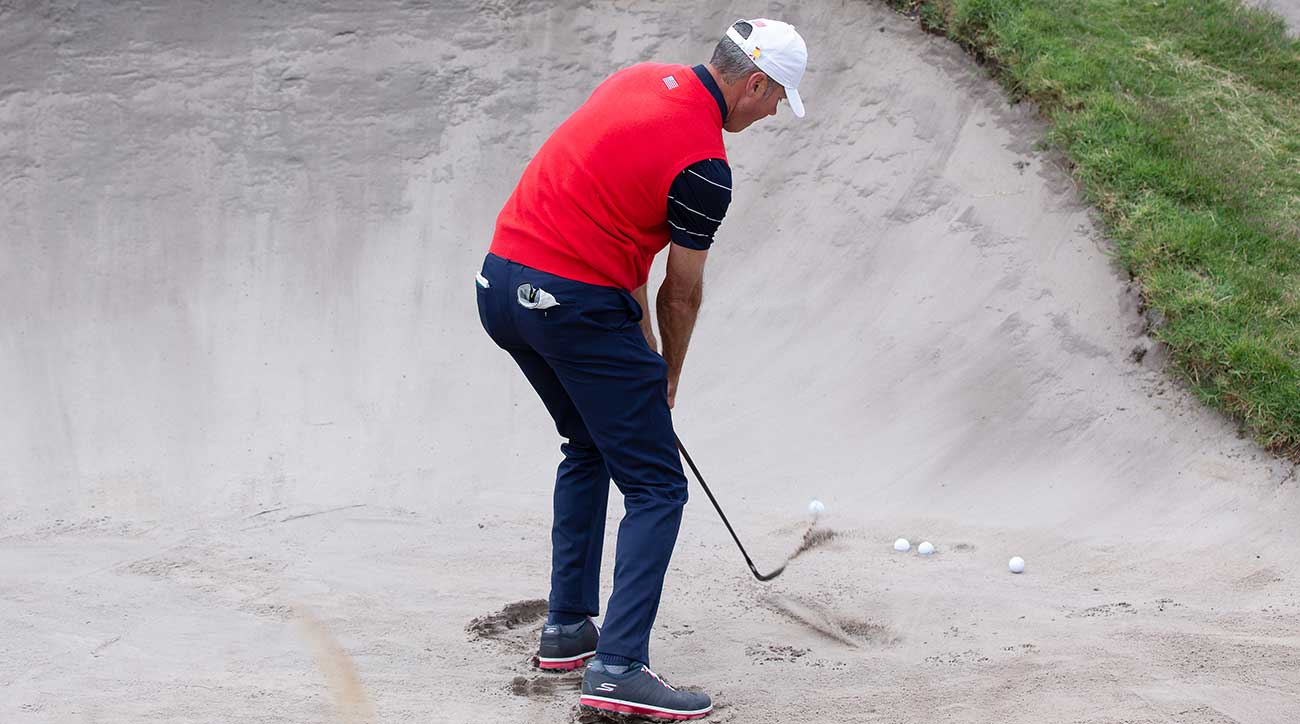
10. Leaving the ball in the bunker
You’re right next to the green in the sand, so close you could just throw it out. One of the more frustrating and embarrassing shots is to just leave the ball in the bunker.
One of the most important considerations when it comes to greenside sand is that your technique needs to match your swing speed. In other words, if you have a low clubhead speed, you will want to do things that add to distance like making a full, aggressive golf swing that pivots around your trail leg, with an open clubface.
If you are one of the lucky golfers who hits the ball far, your technique needs to match this and your adjustments need to focus on controlling your power, for example, using a lob wedge and even a sense of under-releasing your trail hand to add more loft and bounce at impact to produce higher and shorter distances.
Latest In Instruction

Golf.com

